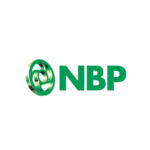
Become a Data Analyst
MS Excel | Power BI | SQL | Python | Tableau | Cloud | Upwork | R Language
Join our "Become a Data Analyst" course and master MS Excel, Power BI, SQL, and Python.
Through these 72 hours of classes, you'll gain the skills necessary to thrive in the competitive job market or launch a successful freelance career. Unleash your potential as a data analyst!
Outline
Module 1: Excel for Data Analysis
Excel for Data Analysis
• Excel shortcuts make life easy
• Data Validation
• Data Analysis techniques
• Filter, Multi Filter, Sort, Multi Sort and Custom Sort
• Conditional Formatting
• Working with Basic Charts
• Working with Multiple Worksheets and workbooks (Links)
• Applying Security to Files, Workbooks & Worksheets
Essential Formulas for Data Analysis
• SUM, AVERAGE, COUNT, MIN, MAX for basic calculations
• AVERAGEIFS, COUNTIFS, SUMIFS for multi-condition analysis
• SUBTOTAL for filter data analysis
Logical and Lookup Functions
• Logical Functions (IF, AND, OR)
• VLOOKUP, HLOOKUP, and XLOOKUP for searching data
• INDEX and MATCH for advanced lookup scenarios
Advanced Data Analysis Techniques
• Consolidating Techniques
• Working with the Name Manager
• Advanced Charting and Graphs
• Data Analysis with What-If Analysis Tools
Data Analysis with Pivot Tables
• Creating Pivot Tables from raw data
• Summarizing data using Pivot Tables
• Grouping data by categories, dates, and values
• Calculated fields and items for custom analysis
• Using slicers to filter data interactively
• Creating dynamic Pivot Charts from Pivot Table data
• Formatting and customizing charts for presentation
Visualizing Data with Charts
• Bar, line, pie, and column charts for visualizing trends
• Adding and formatting data labels, axes, and legends
• Combination charts (e.g., bar and line charts)
• Sparklines for in-cell mini charts
Dashboards and Reporting in Excel
• Designing a dashboard layout for clear data representation
• Using Pivot Tables, Pivot Charts, slicers, and form controls for interactive dashboards
• Design Principles for Effective Dashboards
• Ensuring consistency, clarity, and readability
• Optimizing dashboards for sharing and collaboration
• Exporting dashboards and reports as PDFs or Excel workbooks
• Protecting data and restricting access to sensitive information
• Conditional Formatting for Data Highlighting
• Creating Sparklines for In-Line Data Trends
Data Analysis with Power Query
• Importing data from multiple sources
• Cleaning and transforming data using Power Query
• Combining data from multiple tables and sources
• Creating automated data transformations
Module 2: Power BI for Data Analysis
Introduction to Power BI Desktop
• Overview of Power BI components: Desktop, Service, and Mobile
• Key features and benefits of Power BI Desktop
• Understanding the Power BI interface and workflow
Data Transformation with Power Query
• Importing data from Excel, databases, CSV files, and cloud services
• Handling multiple data sources
• Removing duplicates and filtering data
• Pivoting and unpivoting data
• Splitting and merging columns
• Conditional columns
• Replacing and transforming values
• Grouping and aggregating data
• Merging and appending queries
Data Modeling in Power BI
• Creating a Data Model
• Defining relationships between tables
• Star schema and snowflake schema in Power BI
• Difference between calculated columns and measures
• Creating calculated columns for custom data
• Optimizing Data Models
• Hiding and sorting columns
• Managing relationships and model performance
• Implementing hierarchical structures (drill-downs)
DAX (Data Analysis Expressions) Functions
• Introduction to DAX
• Syntax and structure of DAX
• Understanding row context and filter context
• Aggregation functions: SUM, MIN, MAX, COUNT, AVERAGE
• Logical functions: IF, SWITCH
• Text functions: CONCATENATE, LEFT, RIGHT
• Time intelligence functions: DATEADD, SAMEPERIODLASTYEAR, YTD, QTD, MTD
• Advanced measures for financial analysis (e.g., YTD growth, % changes)
• Handling complex scenarios with CALCULATE and FILTER
Data Visualization and Reporting
• Best Practices in Data Visualization
• Choosing the right visual for your data
• Overview of visualization types: bar charts, line charts, pie charts, maps, etc.
• Building dynamic and interactive visuals
• Customizing Visuals
• Formatting and styling visuals for clarity and impact
• Conditional formatting for highlighting key insights
• Using slicers and filters to add interactivity
• Creating drill-through and drill-down capabilities for deeper analysis
• Adding tooltips and custom visuals for enhanced reporting
• Simplifying and decluttering reports for better readability
Report Sharing and Collaboration
• Publishing reports to the cloud (Power BI Service)
• Sharing reports via email, Teams, and embedding in websites
• Setting up automatic data refreshes
• Scheduling reports and dashboards to update regularly
Module 3: SQL for Data Analysis
Introduction to SQL Server
• Overview of SQL Server
• What is SQL Server?
• Installation and Setup
• SQL Server Management Studio (SSMS) Interface
Basics of SQL
• Introduction to SQL
• SQL Syntax and Structure
• Data Types
• Basic SQL Commands
• SELECT, FROM, WHERE
• INSERT, UPDATE, DELETE
• Filtering and Sorting Data
• WHERE Clause
• ORDER BY Clause
Advanced SQL Queries
• Aggregate Functions
• COUNT, SUM, AVG, MIN, MAX
• Grouping Data
• GROUP BY Clause
• HAVING Clause
• Joining Tables
• INNER JOIN, LEFT JOIN, RIGHT JOIN, FULL JOIN
Data Manipulation and Transformation
• Subqueries and Nested Queries
• Common Table Expressions (CTEs)
• Window Functions
• ROW_NUMBER(), RANK(), DENSE_RANK(), NTILE()
• Data Transformation Techniques
Working with Complex Data Types
• Working with Dates and Times
• Date Functions
• String Functions
• CONCAT, SUBSTRING, CHARINDEX, REPLACE
SQL Server Advanced Topics
• Indexing and Performance Tuning
• Creating and Managing Indexes
• Query Optimization
• Stored Procedures and Functions
• Creating and Executing Stored Procedures
• User-Defined Functions
Data Analysis and Reporting
• Basic Data Analysis Techniques
• Descriptive Statistics
• Using SQL for Data Analysis
• Exploratory Data Analysis (EDA)
• Generating Reports
• Creating Simple Reports in SSMS
• Exporting Data to Excel
Hands-on Projects and Case Studies
• Real-world Data Analysis Projects
- Case Studies
Module 4: Python for Data Analysis
Introduction to Python for Data Analysis
• Overview of Python and its Applications in Data Analysis
• Why Python for Data Analysis?
• Setting Up Python Environment
• Introduction to Google Colab
Python Basics
• Python Syntax and Basics
• Variables, Data Types, and Operators
• Control Structures: if-else, loops
• Functions and Modules
• Defining and Calling Functions
• Importing and Using Modules
Data Structures and Handling
• Working with Lists, Tuples, and Dictionaries
• Introduction to NumPy
• Creating and Manipulating Arrays
• Array Operations and Broadcasting
Working with Data Sources
• Reading from and writing to a csv
• Reading documentation
• API calls
• Data Ethics
Data Manipulation with Pandas
• Introduction to Pandas
• DataFrames and Series
• Data Loading, Cleaning, and Preparation
• Reading and Writing Data (CSV, Excel, etc.)
• Handling Missing Data
• Data Transformation and Filtering
Data Analysis and Exploration
• Exploratory Data Analysis (EDA)
• Descriptive Statistics
• Data Visualization with Matplotlib and Seaborn
• Plotting and Customizing Graphs
• Grouping and Aggregating Data
• Groupby() and aggregate functions
Working with Dates and Times
• Date and Time Data Types and Operations
• Resampling and Time Series Analysis
• Date Functionality in Pandas
Practical Applications and Case Studies
• Real-world Data Analysis Projects
Add-Ons: Tableau for Data Analysis (Recorded videos)
Introduction to Tableau
• Overview of Tableau and its uses in data analysis.
• Understanding the Tableau interface.
• Connecting to data sources.
Data Preparation
• Data sourcing and importing.
Visualization Basics
• Creating basic visualizations (bar charts, line charts, pie charts, etc.).
• Applying filters and sorting data.
• Formatting visualizations for clarity.
Advanced Visualization Techniques
• Creating interactive dashboards.
• Using parameters and calculated fields.
• Implementing advanced chart types (treemaps, heatmaps, etc.).
Data Analysis
• Exploring trends and patterns in data.
• Conducting ad-hoc analysis with Tableau.
• Utilizing forecasting and trend analysis tools.
Mapping Data
• Geospatial analysis with maps.
.
• Analyzing location-based data.
Sharing and Collaboration
• Publishing workbooks to Tableau Public.
• Sharing insights and visualizations with stakeholders.
• Collaborating on projects within Tableau.
Add-Ons: R Language for Data Analysis
Introduction to R and RStudio
• Overview of R Language
• What is R and its Applications in Data Analytics?
• Installing R and RStudio
• Introduction to the RStudio Interface
• Basic R Syntax
• Variables and Data Types
• Basic Operations
Data Structures in R
• Vectors, Matrices, Lists, and Data Frames
• Creating and Manipulating Vectors
• Understanding Matrices
• Working with Lists
• Introduction to Data Frames
Data Manipulation with dplyr
• Introduction to the dplyr Package
• Installing and Loading dplyr
• Basic Data Manipulation
• Filtering Rows with filter()
• Selecting Columns with select()
• Arranging Rows with arrange()
• Mutating Data with mutate()
• Summarizing Data with summarize()
Basic Data Visualization with ggplot2
• Introduction to ggplot2
• Installing and Loading ggplot2
• Creating Basic Plots
• Scatter Plots, Line Plots, Bar Plots
• Customizing Plots
• Adding Titles, Labels, and Themes
Add-Ons: Introduction to Cloud Computing for Data Analysts
Overview of Cloud Computing
• Definition and Key Concepts of Cloud Computing
• What is Cloud Computing?
• Key Characteristics (On-Demand Self-Service, Broad Network Access, Resource Pooling, Rapid Elasticity, Measured Service)
• Types of Cloud Computing
• Public, Private, and Hybrid Clouds
• Cloud Service Models
• Infrastructure as a Service (IaaS)
• Platform as a Service (PaaS)
• Software as a Service (SaaS)
Cloud Computing for Data Analysis
• Benefits of Using Cloud for Data Analysis
• Scalability, Flexibility, Cost Efficiency
• Introduction to Cloud Storage Solutions
• Object Storage (e.g., Amazon S3, Azure Blob Storage, Google Cloud Storage)
• File Storage and Database Storage Options
• Data Warehousing in the Cloud
• Overview of Cloud Data Warehouses (e.g., Amazon Redshift, Google BigQuery, Azure Synapse Analytics)
Key Cloud Services for Data Analysts
• Introduction to Cloud Data Processing Tools
• Big Data Processing (e.g., AWS EMR, Azure HDInsight, Google Dataflow)
• Serverless Computing (e.g., AWS Lambda, Azure Functions, Google Cloud Functions)
• Cloud-Based SQL Databases
• Managed Database Services (e.g., Amazon RDS, Azure SQL Database, Google Cloud SQL)
• Introduction to Data Integration and ETL Tools in the Cloud
• ETL Services (e.g., AWS Glue, Azure Data Factory, Google Cloud Dataflow)
Practical Applications and Case Studies
• Real-World Examples of Cloud Data Analysis
• Case Study: Using Cloud Storage for Data Analysis
• Case Study: Data Warehousing and Big Data Processing
• Demonstration of Cloud Tools
• Brief Demo of a Cloud Storage Solution
• Brief Demo of a Cloud-Based Data Warehouse
Add-Ons: Start Freelancing on Upwork
Introduction to Upwork
• What is Upwork?
• Benefits of being an Upwork freelancer
• Overview of the Upwork platform
Setting Up Your Upwork Profile
• Creating an effective profile
• Crafting a compelling title and overview
• Highlighting your skills and expertise
• Building a portfolio and showcasing your work
Finding and Applying for Jobs
• Search strategies and filters
• Understanding job descriptions and requirements
• Crafting winning proposals
• Following up on proposals and interviews
Upwork Fees and Billing
• Understanding Upwork's fee structure
• Setting your rates and pricing strategies
• Invoicing and getting paid
Communication and Client Management
• Effective communication with clients
• Setting expectations and deliverables
• Managing revisions and feedback
• Building long-term client relationships
Upwork's Policies and Guidelines
• Upwork's terms of service
• Maintaining a good job success score
• Handling disputes and resolving issues
Growing Your Upwork Business
• Building a strong reputation and profile
• Earning and maintaining high ratings
• Leveraging Upwork's features and tools
• Expanding your service offerings
Bonus Tips and Best Practices
• Time management and productivity tips
• Networking and collaboration opportunities
• Continuing education and skill development
• Q&A and open discussion
Course Fee
● Online
Rs. 9,000/- x 2 Installment Monthly
● In-Person:
Rs. 18,000/- x 2 Installment Monthly
- Excluding the SDC Certificate Fee
Account Details
Bank: Habib Bank Limited
Account Title: AIN GenX
Account No: 5910-70000512-03
IBAN No: PK08 HABB 0059 1070 0005 1203
Faciliators

Irfan Bakaly
Data Analyst
25+ years of experience in Data Analysis

Noor Surani
Tech Entrepreneur
25+ years of experience in Data Analysis

Tamkeen Ahmed
Data Analyst
Supply Chain Profession
5+ years of Teaching Experience

Sohail Ahmed
Data Scientist
5+ years Experience of Data Science
Who this course is for:
Working Professionals, Entrepreneurs & Business Owners, Beginners & Students, Anyone Interested in Data
Duration
● 6 Months (72 Hours)
Classes
● In-Person/Online
Schedule
- Day: Sunday's Only
- Timing: 02:30 - 05:30 pm (PST)
Starting From
● Sunday, 12 October, 2025
Fee once paid, non-refundable, and non-transferable.
Participants from Top Organizations












Certificates

